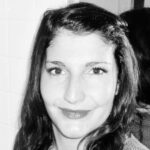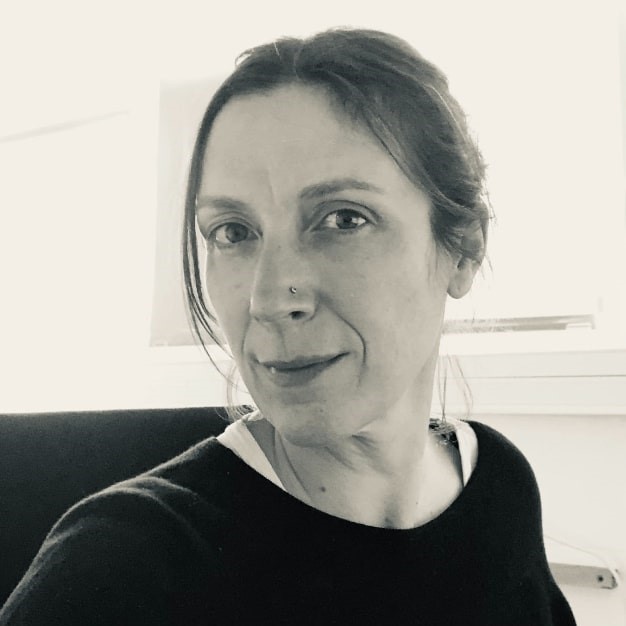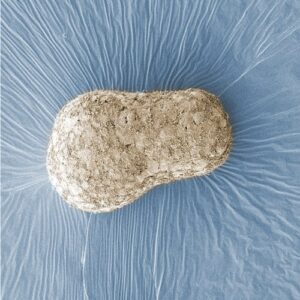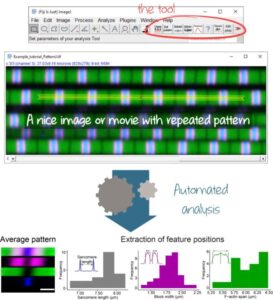Can you tell us about your career path and what motivated you to come and work at IBDM?
I joined IBDM long time ago to do a DEA (post-graduate diploma) in Harold Cremer’s team. After starting a thesis in Paris, which turned out to be a dead end, I came back to IBDM to do my PhD again in Harold Cremer’s team. There, I elucidated several molecular control points of postnatal neurogenesis. By the end of my PhD, I became fascinated by multiciliated cells (MCCs) and decided to devote my post-doc (UCL Brussels) to the elucidation of multi-scale coordination of ciliary beats in murine ependyma.
Just before I left, Laurent Kodjabachian also started working on MCCs. 5 years later, Laurent and I had the opportunity to discuss the progress of our respective projects on the subject and noted our shared interest in MCCs and the fundamental questions they enable us to address. We naturally decided to build on our shared interests and combine our approaches and models. This way, I came back to IBDM.
What scientific result did you find particularly satisfying and why?
I will present two of them 😉
The first is the implementation of a murine brain electroporation protocol during my thesis. I’m proud of this result because it’s the fruit of an opportunity offered by Harold Cremer to develop an idea I had as a beginner PhD student. More than 10 years after its introduction, this method is still widely used. I learnt from this idea that developing new technical approaches could be a real ‘game changer’ for tackling a scientific problem. I’m still cultivating this philosophy in my current projects.
The second is not yet published, but I love it. In the context of MCCs, I want to understand how a MCC is able to homogenize the size of 100 or so cilia. To understand this phenomenon, we are developing an advanced descriptive approach, but we have also identified an experimental condition in which we generate very small cilia and others that are much too long in the same cell. This result, unprecedented in the field, opens up a vast project.
What are you working on at the moment?
MCCs! More seriously, I’m in the process of finalizing papers on the control of centriole number in MCCs, which has led us to explore a little-studied organelle, the deuterosome, from every angle. To do this, we have developed biochemical approaches and a great deal of imaging (optical and electronic). You can learn more about this here.
There is also a project on the size of cilia funded by my ANR JCJ. And I’m in the process of conceptualizing the next project that I would like to develop based on an observation made 10 years ago as a postdoc, which will address questions about the evolution of compartmentalization of functions in multiciliated epithelia.
What do you like most about your job? Least?
The less, the lack of time to do everything I wanted to do.
If you had to adopt a motto to guide your career, what would it be?
It’s never too late to bloom.
Do you have a story about your work?
One discouraging day when I was doing my thesis, I came very close to throwing away, without looking at it, THE slide containing the first section of brain with electroporated cells. I realized in retrospect that I’d missed a major milestone in my career. Since that day, I’ve always finished analyzing all my slides.
What recent scientific discovery are you most excited about and why?
I’m fascinated by the notion of micro-chimerism, which shows that we can harbor cells from our mothers in our bodies… I also liked an article that talked about the alliance between a wild bird and honey hunters (there are articles in « le monde » on both subjects).
If you had to choose a superpower based on a scientific phenomenon, which one would you choose and how would you use it?
I’d like to be small enough to walk around in a multicellular epithelium labelled by immunofluorescence or prepared for SEM.
If you were a laboratory tool, what would you be?
Without hesitation, a microscope !
What are your favourite hobbies or pastimes?
Spending time with my partner and our three children. And among others, Yoga, reading, walking, bee-keeping.




